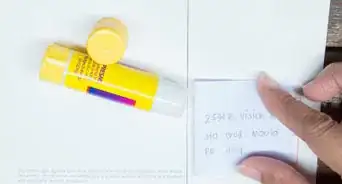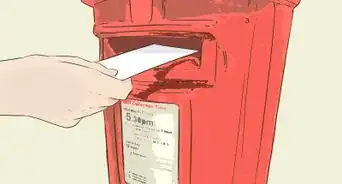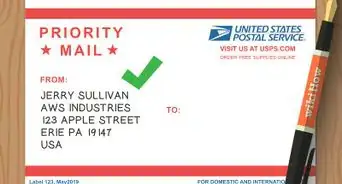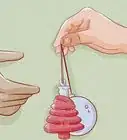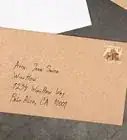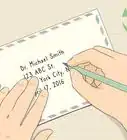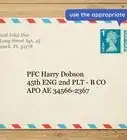This article was co-authored by Tami Claytor and by wikiHow staff writer, Christopher M. Osborne, PhD. Tami Claytor is an Etiquette Coach, Image Consultant, and the Owner of Always Appropriate Image and Etiquette Consulting in New York, New York. With over 20 years of experience, Tami specializes in teaching etiquette classes to individuals, students, companies, and community organizations. Tami has spent decades studying cultures through her extensive travels across five continents and has created cultural diversity workshops to promote social justice and cross-cultural awareness. She holds a BA in Economics with a concentration in International Relations from Clark University. Tami studied at the Ophelia DeVore School of Charm and the Fashion Institute of Technology, where she earned her Image Consultant Certification.
This article has been viewed 121,130 times.
Sending Christmas cards is a cordial way of extending holiday wishes and greetings to friends, family, and colleagues. When it comes to addressing the envelopes for your Christmas cards, you may want to follow specific guidelines for proper addressing etiquette. Or, you may want to use a less formal approach. Either way, make sure to write the addresses clearly and properly so that your Christmas cards get to their destinations on time!
Steps
Formatting the Envelope Properly
-
1Use all caps to make a speedy delivery more likely. While you may feel like using ALL CAPS makes your envelope labeling look too aggressive or loud, it’s the best way to make sure your Christmas card gets to the right place on time. The U.S. Postal Service, for instance, recommends labeling all addresses in capital letters, whether written or typed.[1]
- If you do want to use both capital and lowercase letters, focus on writing as neatly as possible. If you’re typing the addresses, use a large, easy-to-read font.
-
2Write the recipient’s address in the center of the envelope. While there are several similarities, the proper address formatting on an envelope varies somewhat based on if you’re sending the letter to the U.S., France, the U.K., or somewhere else. For instance, in the U.S., write the following in the center of the envelope:[2]
- Line 1: recipient’s name (MR. BEN SHAW)
- Line 2: recipient’s title or other information, if needed (CONTENT DIRECTOR)
- Line 3: recipient’s street address (1999 MARYLAND AVE)
- Line 4: recipient’s apartment number or similar, if needed (SUITE 1A)
- Line 5: recipient’s city, state, ZIP code (OAKMONT, PA 15139)
- Line 6: write “USA” only if sending from outside the U.S.
Advertisement -
3Place your address at the top left corner of the envelope. As with the recipient’s address, the particular formatting details will vary based on where you are located. In most cases, though, your return address should appear in the top left corner of the envelope and look similar in format to the recipient's address.[3]
- If, for example, you’re sending a Christmas card within the U.S., your return address format should mirror that of the recipient address: your name; your title, etc. (if needed); your street address; your apartment number, etc. (if needed); your city, state, and ZIP code.
- Use smaller lettering when writing or typing the return address, but make sure it is large enough to be easily read.
-
4Place the postage stamp at the top right corner of the envelope. This positioning is fairly standard around the world, but check for the requirements of whatever postal services you'll be using, if necessary.[4]
- Make sure you have the necessary amount of postage for your card. Otherwise, your card will be sent back to you!
Addressing Envelopes to Individuals or Couples
-
1Go with “Ms.” as the default way to formally address a woman. When writing to a man, it’s usually a safe bet to use “Mr.” You have more options when addressing women, however. Always use their preference, if you know it, or go with one of the following:[5]
- “Miss” is only used for unmarried girls under the age of 18.
- “Mrs.” is only used for married women who share their spouse’s last name.
- “Ms.” can refer to any adult woman, and is the safest option when you’re not sure what to use.
- Keep in mind that some individuals don’t prefer any of these categorizations. If you think this may be the case and don’t know their preference, just use their first and last name (e.g., Mary Gray).
-
2Write “Mr. and Mrs.” for most couples with shared last names. The most traditional option, if you have a married male and female couple, is “Mr. and Mrs. Pete Wright,” in that order and using only the man’s first name. Alternatively, you can try one of the following:[6]
- “Mr. Pete Wright and Mrs. Jane Wright” for a semi-traditional male-female option.
- “Mrs. Jane Wright and Mr. Pete Wright” is somewhat less traditional, but fine to use.
- Use “Mr. Pete Wright and Mr. Brad Wright” or “Mrs. Jane Wright and Mrs. Kelly Wright” for same-sex married couples, unless they have an alternate preference (e.g., “Mrs. and Mrs. Jane Wright”). You can also use “Ms.” instead of “Mrs.” (but use it in both cases).
-
3Use “Mr.” and “Ms.” for couples with different last names. This holds true whether the couple is married, engaged, or cohabiting. Traditionally, the man’s name comes first, but that’s no longer a hard and fast rule.[7]
- For example: “Mr. Ben Shaw and Ms. Ann Bowen” or “Ms. Ann Bowen and Mr. Ben Shaw.”
- Don’t use “Mr. Ben Shaw and Mrs. Ann Bowen”—only pair “Mr.” and “Mrs.” when there’s a shared last name.
-
4Address a widow by her spouse’s first name or her own. Traditionally, a widowed woman is addressed by her late husband’s name—for example, “Mrs. Pete Wright.” However, it you’d rather use a slightly more modern but still formal style, address her as either “Mrs. Jane Wright” or “Ms. Jane Wright.”[8]
- If you don’t know the person’s specific preference, use your knowledge of them to choose what seems to be the appropriate option. For instance, a 90-year old widow who was married for 65 years might prefer “Mrs. Pete Wright” more than a 25-year old widow who was married for 2 years—but the opposite could be equally true!
- Simply write “Mr. Pete Wright” for a male widower.
-
5Prioritize titles like “Dr.” or “Rev.” when ordering the names. There’s an element of “rank” used in ordering names, and titles like “The Honorable” (for a judge) are considered higher “ranked” than a typical “Mr.” or “Ms.” Consider the following examples:[9]
- “Dr. Mary Gray and Mr. Ed Gray”
- “Rev. and Mrs. Ed Gray” or “Rev. Ed Gray and Mrs. Mary Gray”
- “Dr. Ed Gray and Dr. Mary Gray” or “Drs. Ed and Mary Gray”
- “The Honorable Mary Gray and Dr. Ed Gray”—it’s not always clear which title “outranks” the other (unless you’re dealing with a military family, for instance), so use either their preference or your best judgment.
-
6Try an informal style (without “Mr.” or “Ms.”), if that’s your preference. The fact of the matter is that there are a lot of etiquette rules for addressing various types of envelopes, but plenty of people feel like such rules are too “stuffy” for things like Christmas cards! If you fall into that category, use what feels comfortable to you, as well as what you think the recipient would appreciate.[10]
- For instance, just cut the Mr./Mrs./Ms. element, and titles altogether, and go with a simple “Ben and Ann Shaw” or “Ann and Ben Shaw,” “Ben Shaw and Ann Bowen,” “Ann and Jane Shaw” or “Ann Shaw and Jane Shaw,” and so on.
-
7Add business titles for cards sent to business addresses. If you are sending a Christmas card to a person’s place of business, write the address like you would for a business letter. That means you should include whatever titles they have that are related to the business.[11]
- For instance:
- Mr. Pete Wright
- Executive Director (add this on the second line)
- Or:
- Dr. Jane Wright
- Chair, Department of History (on the second line)
- For instance:
Addressing Envelopes to Entire Families
-
1Write the children’s first names on the second line for the traditional approach. If you want your Christmas card envelope to look more traditional and formal, add the children’s first names separately on the second line after identifying the parents on the first line. For instance:[12]
- Mr. and Mrs. Pete Wright
- Alex and Amy (or Alex, Amy, and Andrew)
-
2Add “and Family” to the parents' names for a semi-formal approach. Instead of the more traditional method of placing the children’s first names on the second line, you may want to try a simpler, one-line approach. You can do this simply by adding “and Family” after the parent or parents names—for instance, “Mr. and Ms. Ben Shaw and Family.”[13]
- You might feel that putting the kids’ names on the second line indicates that they have a secondary status, or that they’re an afterthought. However, by using “and Family,” you’re not actually identifying the children individually, so there are pros and cons to either approach.
- This is a good method to use if you know your recipient has kids, but don’t know their names!
-
3Opt for a less formal method, like “The Wright Family” or “The Wrights.” While these are less formal approaches, they clearly indicate that you are sending your holiday greetings to the entire family as a whole. Just make sure you don’t use any apostrophes! It’s “The Smiths,” not the “Smith’s” and “The Joneses,” not “The Jones’.”[14]
- You might also want to combine the formal, semi-formal, and less formal approaches into a hybrid like this: “Ann, Ben, Alex, and Amy Shaw.” This cuts out all the titles and gives everyone in the family equal billing.
- If the family has members with different last names, you can include them on the envelope, like saying, "The Shaw-Jones Family."[15]
Making the Envelope More Festive
-
1Write the address neatly by hand to personalize your card. If you’re sending out hundreds of Christmas cards, it may be necessary to type out the addresses in order to save time. However, if it’s manageable, personalize your Christmas cards by writing the addresses by hand.[16]
- Postal services such as the USPS prefer that you use all caps, whether writing or typing the address.
- Remember that neatness counts! Use your beautiful cursive writing inside the letter and stick to block capital letters on the envelope.
-
2Use festive return address labels, if desired. While it’s a nice touch to write your return address by hand as well, it’s also fine to use pre-printed address labels with a holiday theme. Make sure your return address is correct and easy to read, however.[17]
- Your return address typically goes in the top left corner of the envelope, but this may vary based on where you’re sending the letter.
- Always include a return address. It makes it less likely that your card will be permanently lost in the mail, and it lets your recipient know who sent the card before they even open it.
- See if your postal service has holiday-themed stamps for sale.
-
3Avoid adding unnecessary images or wording to the front of the envelope. Writing extra things like “Season’s Greetings” or “Happy Holidays” on the envelope may delay the delivery of your Christmas card. Place only the necessary address information on it so it’s easier for the postal service to sort and deliver.[18]
- The same goes for pictures of sleigh bells, Christmas trees, Nativity scenes, and the like.
- Extra writing and images can confuse both machine readers and human sorters.
Community Q&A
-
QuestionIs it proper to include the child of unmarried parents on the card?
 Community AnswerAbsolutely! In fact, some people might be offended if you didn't.
Community AnswerAbsolutely! In fact, some people might be offended if you didn't. -
QuestionHow do I address a female doctor and her husband (who does not have any titles)?
 Community AnswerIn that case, you can write "Doctor Jane Smith and Mr. John Smith."
Community AnswerIn that case, you can write "Doctor Jane Smith and Mr. John Smith." -
QuestionHow do I address a gift to a Dr.'s office and staff?
 CarmillyCommunity AnswerYou can write the name of the office (ex. Main Street Pediatrics) or write "Dr. _____ and Staff."
CarmillyCommunity AnswerYou can write the name of the office (ex. Main Street Pediatrics) or write "Dr. _____ and Staff."
Warnings
- If you are sending a Christmas card envelope decorated with stickers and embellishments to another country, your mail may be delayed arriving to the recipient, depending on that country's postal laws and requirements.⧼thumbs_response⧽
References
- ↑ https://www.southernliving.com/christmas/how-to-address-christmas-cards
- ↑ https://emilypost.com/advice/guide-to-addressing-correspondence/
- ↑ https://emilypost.com/advice/guide-to-addressing-correspondence/
- ↑ https://emilypost.com/advice/guide-to-addressing-correspondence/
- ↑ https://www.usatoday.com/story/news/nation-now/2017/12/14/youre-addressing-your-holiday-cards-wrong-heres-how-its-done/948143001/
- ↑ https://emilypost.com/advice/guide-to-addressing-correspondence/
- ↑ https://emilypost.com/advice/guide-to-addressing-correspondence/
- ↑ https://emilypost.com/advice/guide-to-addressing-correspondence/
- ↑ https://emilypost.com/advice/guide-to-addressing-correspondence/
- ↑ https://emilypost.com/advice/guide-to-addressing-correspondence/
- ↑ https://www.usatoday.com/story/news/nation-now/2017/12/14/youre-addressing-your-holiday-cards-wrong-heres-how-its-done/948143001/
- ↑ https://www.usatoday.com/story/news/nation-now/2017/12/14/youre-addressing-your-holiday-cards-wrong-heres-how-its-done/948143001/
- ↑ https://www.usatoday.com/story/news/nation-now/2017/12/14/youre-addressing-your-holiday-cards-wrong-heres-how-its-done/948143001/
- ↑ https://www.usatoday.com/story/news/nation-now/2017/12/14/youre-addressing-your-holiday-cards-wrong-heres-how-its-done/948143001/
- ↑ Tami Claytor. Etiquette Coach. Expert Interview. 29 September 2020.
- ↑ https://www.usatoday.com/story/news/nation-now/2017/12/14/youre-addressing-your-holiday-cards-wrong-heres-how-its-done/948143001/
- ↑ https://www.usatoday.com/story/news/nation-now/2017/12/14/youre-addressing-your-holiday-cards-wrong-heres-how-its-done/948143001/
- ↑ https://www.usatoday.com/story/news/nation-now/2017/12/14/youre-addressing-your-holiday-cards-wrong-heres-how-its-done/948143001/
- ↑ https://emilypost.com/advice/guide-to-addressing-correspondence/
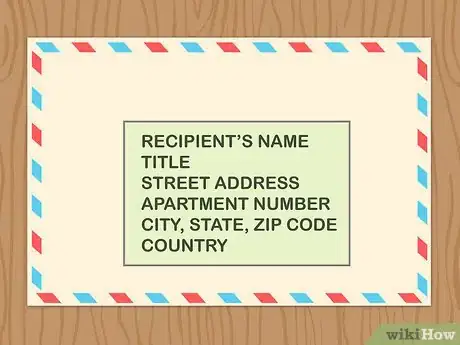
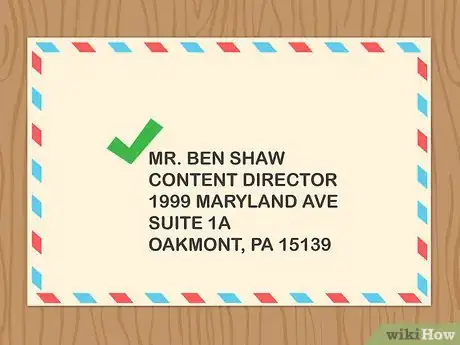
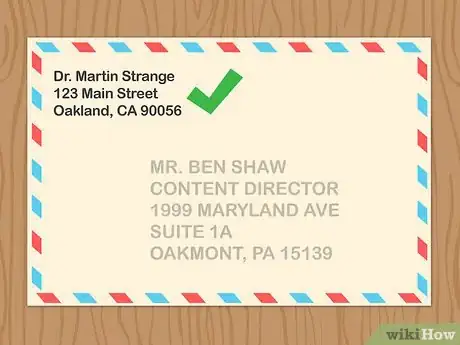
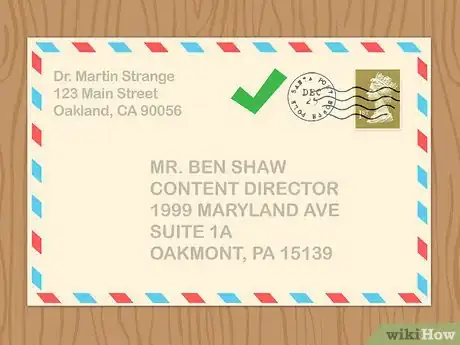
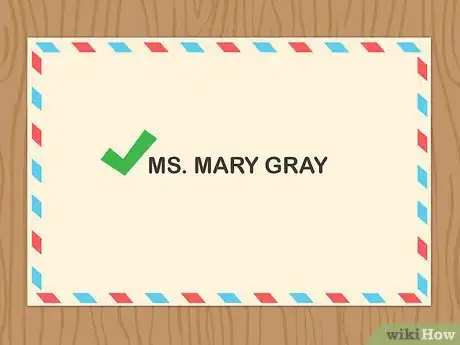
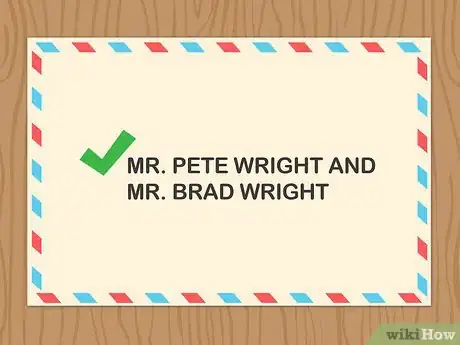
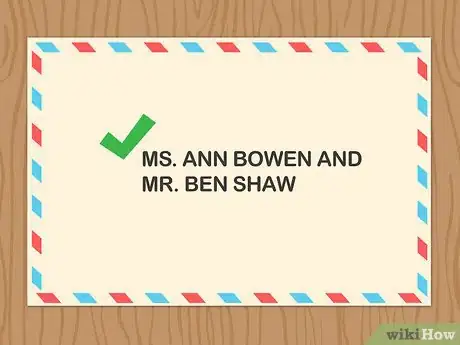
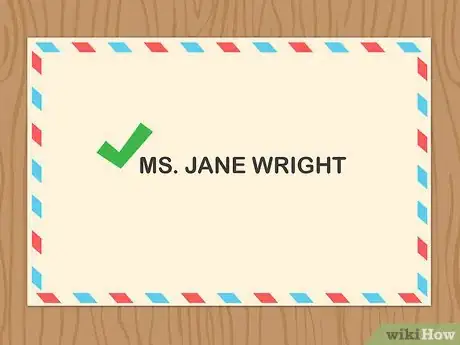
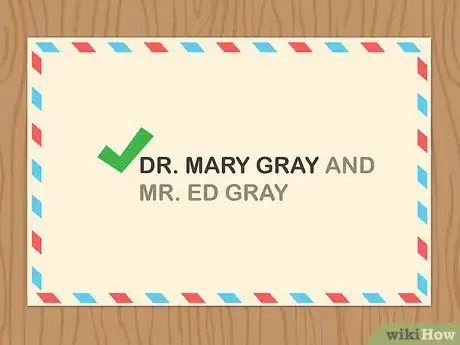
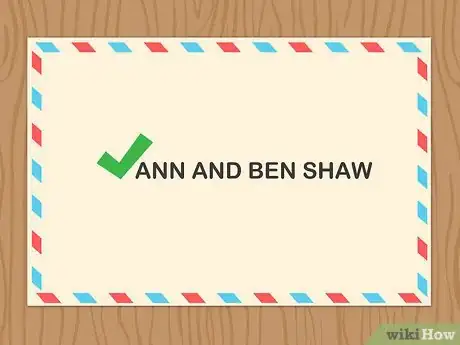
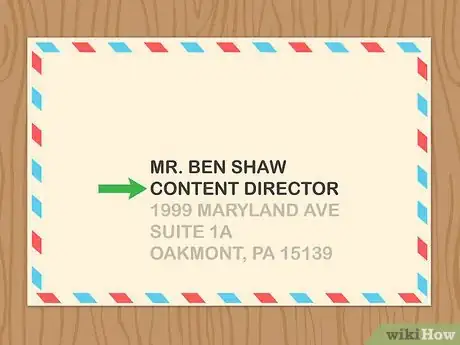
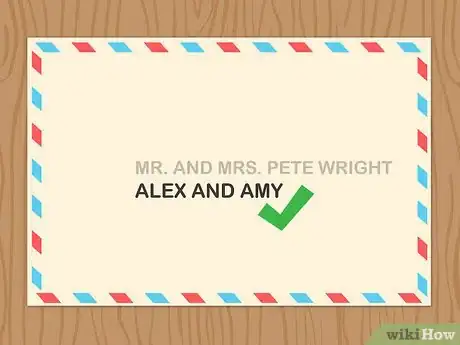
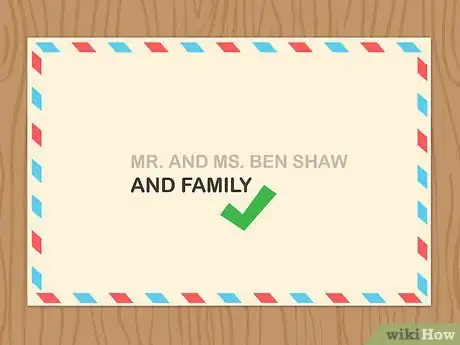
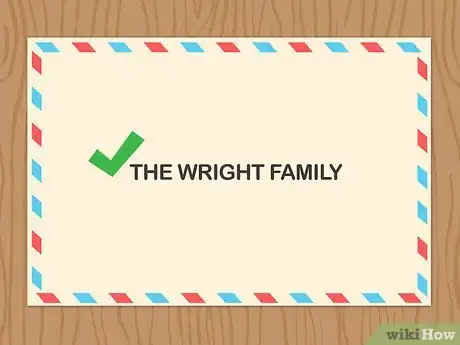

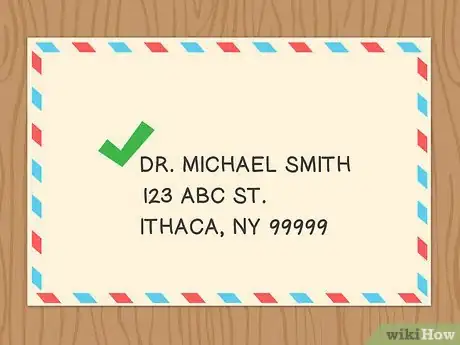
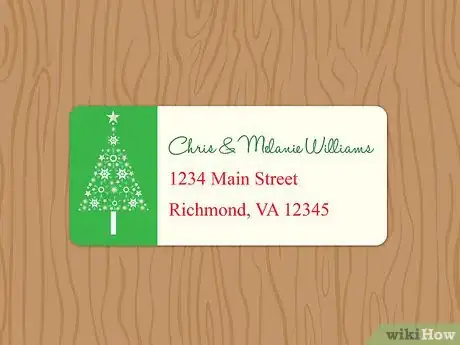
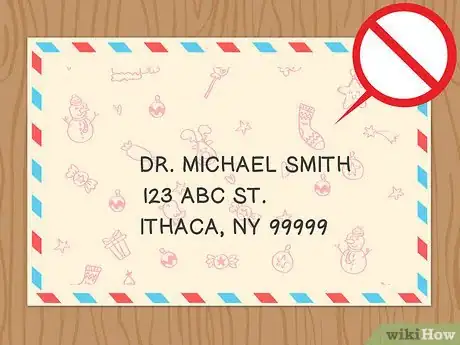
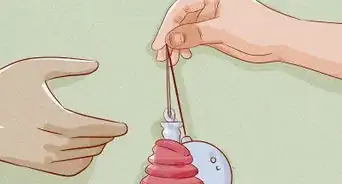
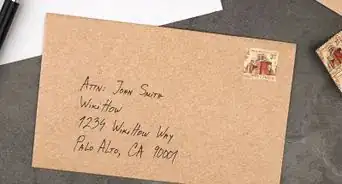

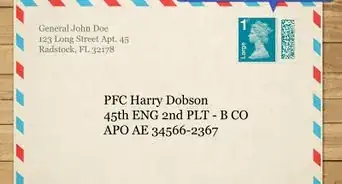
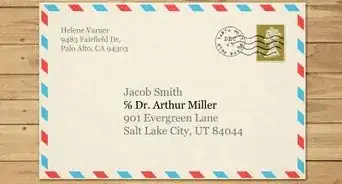
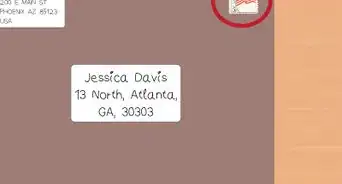
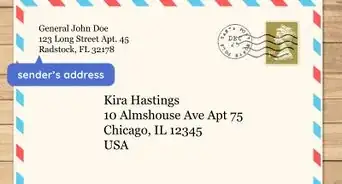
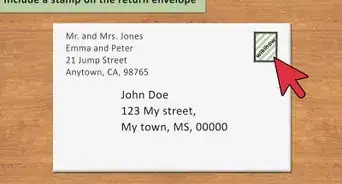
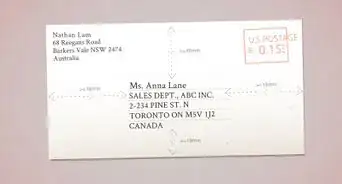
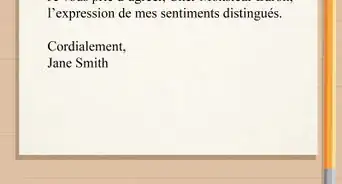
-Step-18-Version-3.webp)
